-
100 results in Exploration of Neuroprotective TherapySort byLatest
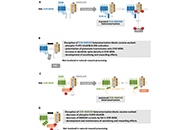 Role of dopamine receptor heteromerization in preclinical models of addiction and other psychiatric disordersOpen AccessReviewSimilar to other psychiatric disorders, drug addiction is linked to changes in neuronal activity within the mesolimbic system, which consists of dopamine (DA) neurons of the ventral tegmental area p [...] Read more.Adèle Vilette ... Peter VanhouttePublished: April 01, 2025 Explor Neuroprot Ther. 2025;5:1004100
Role of dopamine receptor heteromerization in preclinical models of addiction and other psychiatric disordersOpen AccessReviewSimilar to other psychiatric disorders, drug addiction is linked to changes in neuronal activity within the mesolimbic system, which consists of dopamine (DA) neurons of the ventral tegmental area p [...] Read more.Adèle Vilette ... Peter VanhouttePublished: April 01, 2025 Explor Neuroprot Ther. 2025;5:1004100
DOI: https://doi.org/10.37349/ent.2025.1004100
This article belongs to the special issue GPCR Heteroreceptor Complexes as Key Players in Neuroprotection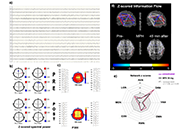 Neurophysiological findings in Attention Deficit Hyperactivity Disorder, a Pandora’s box with therapeutic implicationsOpen AccessOriginal ArticleAim: Growing evidence suggests that Attention Deficit Hyperactivity Disorder (ADHD) may not be a single entity with a universal remedy, but rather a group of conditions resulting from interactive [...] Read more.Montserrat Gerez-Malo ... Carlos AcostaPublished: March 30, 2025 Explor Neuroprot Ther. 2025;5:100499
Neurophysiological findings in Attention Deficit Hyperactivity Disorder, a Pandora’s box with therapeutic implicationsOpen AccessOriginal ArticleAim: Growing evidence suggests that Attention Deficit Hyperactivity Disorder (ADHD) may not be a single entity with a universal remedy, but rather a group of conditions resulting from interactive [...] Read more.Montserrat Gerez-Malo ... Carlos AcostaPublished: March 30, 2025 Explor Neuroprot Ther. 2025;5:100499
DOI: https://doi.org/10.37349/ent.2025.100499
This article belongs to the special issue Advances in the Pathogenesis, Diagnosis and Treatment of Attention Deficit Hyperactivity Disorder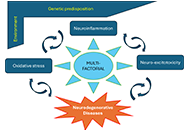 Multilayered neuroprotection by cannabinoids in neurodegenerative diseasesOpen AccessReviewNeurodegenerative diseases are a complex ensemble of ailments characterized by progressive neuronal deterioration and ultimate loss, resulting in drastic impairments of memory, cognition and other b [...] Read more.Ahmed Hasbi, Susan R. GeorgePublished: March 09, 2025 Explor Neuroprot Ther. 2025;5:100498
Multilayered neuroprotection by cannabinoids in neurodegenerative diseasesOpen AccessReviewNeurodegenerative diseases are a complex ensemble of ailments characterized by progressive neuronal deterioration and ultimate loss, resulting in drastic impairments of memory, cognition and other b [...] Read more.Ahmed Hasbi, Susan R. GeorgePublished: March 09, 2025 Explor Neuroprot Ther. 2025;5:100498
DOI: https://doi.org/10.37349/ent.2025.100498
This article belongs to the special issue GPCR Heteroreceptor Complexes as Key Players in Neuroprotection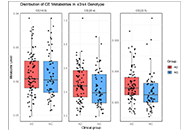 CE(20:4) and CE(22:5) cholesteryl ester levels are elevated in the plasma of Alzheimer’s disease patients with ε3/ε4 genotypeOpen AccessOriginal ArticleAim: This study investigates the association between ApoE genotype, plasma cholesteryl ester (CE) levels, and Alzheimer’s disease (AD) status, with a focus on CE(20:4) and CE(22:5) levels as po [...] Read more.Eleonora Stefanini ... Rafael FrancoPublished: February 24, 2025 Explor Neuroprot Ther. 2025;5:100497
CE(20:4) and CE(22:5) cholesteryl ester levels are elevated in the plasma of Alzheimer’s disease patients with ε3/ε4 genotypeOpen AccessOriginal ArticleAim: This study investigates the association between ApoE genotype, plasma cholesteryl ester (CE) levels, and Alzheimer’s disease (AD) status, with a focus on CE(20:4) and CE(22:5) levels as po [...] Read more.Eleonora Stefanini ... Rafael FrancoPublished: February 24, 2025 Explor Neuroprot Ther. 2025;5:100497
DOI: https://doi.org/10.37349/ent.2025.100497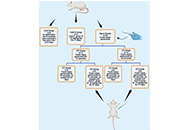 The potential therapeutic effects of coenzyme Q10 on the sciatic nerve regeneration following short- and long-term injuryOpen AccessOriginal ArticleAim: This study aims to investigate the effects of administering coenzyme Q10 (CoQ10) after both short-term and long-term sciatic nerve damage. Methods: Six groups of adult male Wistar albi [...] Read more.Ahmed Omer Mead ... Süleyman KaplanPublished: January 26, 2025 Explor Neuroprot Ther. 2025;5:100496
The potential therapeutic effects of coenzyme Q10 on the sciatic nerve regeneration following short- and long-term injuryOpen AccessOriginal ArticleAim: This study aims to investigate the effects of administering coenzyme Q10 (CoQ10) after both short-term and long-term sciatic nerve damage. Methods: Six groups of adult male Wistar albi [...] Read more.Ahmed Omer Mead ... Süleyman KaplanPublished: January 26, 2025 Explor Neuroprot Ther. 2025;5:100496
DOI: https://doi.org/10.37349/ent.2025.100496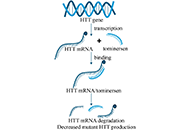 Therapeutic approaches for repeat expansion diseases: a comprehensive reviewOpen AccessMini ReviewRepeat expansion diseases (REDs) are genetic disorders caused by unusual expansions of DNA sequences within certain genes. They cause several neurodegenerative diseases including Huntington’s dise [...] Read more.Afsana BhuiyanPublished: December 25, 2024 Explor Neuroprot Ther. 2024;4:485–496
Therapeutic approaches for repeat expansion diseases: a comprehensive reviewOpen AccessMini ReviewRepeat expansion diseases (REDs) are genetic disorders caused by unusual expansions of DNA sequences within certain genes. They cause several neurodegenerative diseases including Huntington’s dise [...] Read more.Afsana BhuiyanPublished: December 25, 2024 Explor Neuroprot Ther. 2024;4:485–496
DOI: https://doi.org/10.37349/ent.2024.00095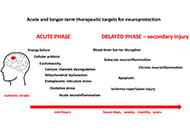 Exploring therapeutical targets and innovative treatments for ischemic stroke: a comprehensive reviewOpen AccessReviewThis review focuses on the current advances in the field of therapeutic targets and treatments for stroke. Stroke is a major health problem worldwide, with significant impacts on morbidity and morta [...] Read more.Lidija RadenovicPublished: November 20, 2024 Explor Neuroprot Ther. 2024;4:459–484
Exploring therapeutical targets and innovative treatments for ischemic stroke: a comprehensive reviewOpen AccessReviewThis review focuses on the current advances in the field of therapeutic targets and treatments for stroke. Stroke is a major health problem worldwide, with significant impacts on morbidity and morta [...] Read more.Lidija RadenovicPublished: November 20, 2024 Explor Neuroprot Ther. 2024;4:459–484
DOI: https://doi.org/10.37349/ent.2024.00094
This article belongs to the special issue Therapeutic Targets for Neuroprotection in Ischemic Stroke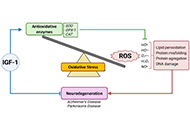 Potentialities of IGF-1 for regulating oxidative stress in neuroinflammation and neurodegeneration: theoretical reviewOpen AccessReviewInsulin-like growth factor-1 (IGF-1) elicits a variety of effects on the regulation of oxidative stress, a topic that remains shrouded in controversy. This intricate regulation plays a pivotal role [...] Read more.Macarena Lorena Herrera ... Claudia Beatriz HereñúPublished: October 31, 2024 Explor Neuroprot Ther. 2024;4:442–458
Potentialities of IGF-1 for regulating oxidative stress in neuroinflammation and neurodegeneration: theoretical reviewOpen AccessReviewInsulin-like growth factor-1 (IGF-1) elicits a variety of effects on the regulation of oxidative stress, a topic that remains shrouded in controversy. This intricate regulation plays a pivotal role [...] Read more.Macarena Lorena Herrera ... Claudia Beatriz HereñúPublished: October 31, 2024 Explor Neuroprot Ther. 2024;4:442–458
DOI: https://doi.org/10.37349/ent.2024.00093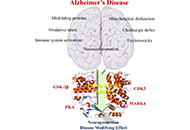 Protein kinases as therapeutic targets for Alzheimer’s disease: a brief reviewOpen AccessReviewAlzheimer’s disease (AD) is a progressive and incurable neurodegenerative disorder, with an unknown etiology and a multifactorial pathophysiology characterized by protein misfolding, neuroinflamma [...] Read more.Isabela Marie Fernandes Silva ... Claudio Viegas Jr.Published: October 28, 2024 Explor Neuroprot Ther. 2024;4:411–441
Protein kinases as therapeutic targets for Alzheimer’s disease: a brief reviewOpen AccessReviewAlzheimer’s disease (AD) is a progressive and incurable neurodegenerative disorder, with an unknown etiology and a multifactorial pathophysiology characterized by protein misfolding, neuroinflamma [...] Read more.Isabela Marie Fernandes Silva ... Claudio Viegas Jr.Published: October 28, 2024 Explor Neuroprot Ther. 2024;4:411–441
DOI: https://doi.org/10.37349/ent.2024.00092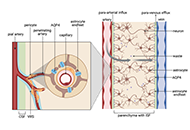 Impaired glymphatic clearance is an important cause of Alzheimer’s diseaseOpen AccessMini ReviewAlzheimer’s disease (AD) is the leading cause of dementia worldwide. The disease is characterized by the abnormal accumulation of amyloid β (Aβ) protein creating neuritic plaques, hyperphosphory [...] Read more.Iyawnna Hazzard ... Forshing LuiPublished: October 24, 2024 Explor Neuroprot Ther. 2024;4:401–410
Impaired glymphatic clearance is an important cause of Alzheimer’s diseaseOpen AccessMini ReviewAlzheimer’s disease (AD) is the leading cause of dementia worldwide. The disease is characterized by the abnormal accumulation of amyloid β (Aβ) protein creating neuritic plaques, hyperphosphory [...] Read more.Iyawnna Hazzard ... Forshing LuiPublished: October 24, 2024 Explor Neuroprot Ther. 2024;4:401–410
DOI: https://doi.org/10.37349/ent.2024.00091
This article belongs to the special issue The Urgent Need for New Hypotheses to Develop Effective Therapeutic Tools Against Alzheimer's Disease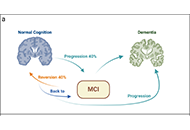 Reversion or compensation of mild cognitive impairment to normal cognition: strategies to prevent the development of Alzheimer’s disease continuumOpen AccessPerspectiveAlzheimer’s disease continuum has been described as the progressive stages of the disease over a long period. This progression can be categorized into three main stages: preclinical, mild cognitiv [...] Read more.Marina Avila-Villanueva, Jesús AvilaPublished: September 27, 2024 Explor Neuroprot Ther. 2024;4:392–400
Reversion or compensation of mild cognitive impairment to normal cognition: strategies to prevent the development of Alzheimer’s disease continuumOpen AccessPerspectiveAlzheimer’s disease continuum has been described as the progressive stages of the disease over a long period. This progression can be categorized into three main stages: preclinical, mild cognitiv [...] Read more.Marina Avila-Villanueva, Jesús AvilaPublished: September 27, 2024 Explor Neuroprot Ther. 2024;4:392–400
DOI: https://doi.org/10.37349/ent.2024.00090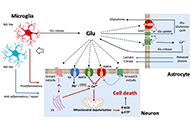 Possible roles of heteroreceptor complexes in excitotoxic processesOpen AccessReviewExcitotoxicity represents a neuropathological process, describing the toxic actions of excitatory neurotransmitters, where the excessive or prolonged activation of glutamate receptors triggers a cas [...] Read more.Diego Guidolin ... Luigi F. AgnatiPublished: September 24, 2024 Explor Neuroprot Ther. 2024;4:366–391
Possible roles of heteroreceptor complexes in excitotoxic processesOpen AccessReviewExcitotoxicity represents a neuropathological process, describing the toxic actions of excitatory neurotransmitters, where the excessive or prolonged activation of glutamate receptors triggers a cas [...] Read more.Diego Guidolin ... Luigi F. AgnatiPublished: September 24, 2024 Explor Neuroprot Ther. 2024;4:366–391
DOI: https://doi.org/10.37349/ent.2024.00089
This article belongs to the special issue GPCR Heteroreceptor Complexes as Key Players in Neuroprotection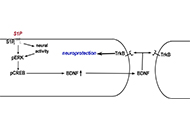 Lysophospholipid receptors in neurodegeneration and neuroprotectionOpen AccessReviewThe central nervous system (CNS) is one of the most complex physiological systems, and treatment of CNS disorders represents an area of major medical need. One critical aspect of the CNS is its lack [...] Read more.Eric BirgbauerPublished: August 22, 2024 Explor Neuroprot Ther. 2024;4:349–365
Lysophospholipid receptors in neurodegeneration and neuroprotectionOpen AccessReviewThe central nervous system (CNS) is one of the most complex physiological systems, and treatment of CNS disorders represents an area of major medical need. One critical aspect of the CNS is its lack [...] Read more.Eric BirgbauerPublished: August 22, 2024 Explor Neuroprot Ther. 2024;4:349–365
DOI: https://doi.org/10.37349/ent.2024.00088
This article belongs to the special issue GPCR Heteroreceptor Complexes as Key Players in Neuroprotection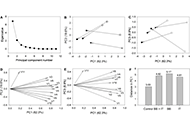 Quantitative analysis of the effects of acoustic neurostimulation on the neuropsychology of healthy adultsOpen AccessLetter to the EditorTo quantitatively analyze the effects of acoustic neurostimulation on the symptoms of depression, anxiety, stress, and sleep quality in healthy workers. Eleven physiological and psychological variab [...] Read more.Radiance C. Bouldin ... Jonghoon KangPublished: August 21, 2024 Explor Neuroprot Ther. 2024;4:319–324
Quantitative analysis of the effects of acoustic neurostimulation on the neuropsychology of healthy adultsOpen AccessLetter to the EditorTo quantitatively analyze the effects of acoustic neurostimulation on the symptoms of depression, anxiety, stress, and sleep quality in healthy workers. Eleven physiological and psychological variab [...] Read more.Radiance C. Bouldin ... Jonghoon KangPublished: August 21, 2024 Explor Neuroprot Ther. 2024;4:319–324
DOI: https://doi.org/10.37349/ent.2024.00086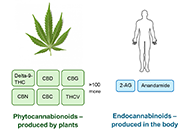 Phytocannabinoids—Evaluation of their therapeutic role in neuroinflammationOpen AccessReviewNeuroinflammation can be caused by disease, aging, infection, brain injury, toxicity, or stress. It is a contributory factor in the neuropathology of serious conditions that include multiple scleros [...] Read more.Sharon Smith ... David HealPublished: August 22, 2024 Explor Neuroprot Ther. 2024;4:325–348
Phytocannabinoids—Evaluation of their therapeutic role in neuroinflammationOpen AccessReviewNeuroinflammation can be caused by disease, aging, infection, brain injury, toxicity, or stress. It is a contributory factor in the neuropathology of serious conditions that include multiple scleros [...] Read more.Sharon Smith ... David HealPublished: August 22, 2024 Explor Neuroprot Ther. 2024;4:325–348
DOI: https://doi.org/10.37349/ent.2024.00087
This article belongs to the special issue Natural Products in Neurotherapeutic Applications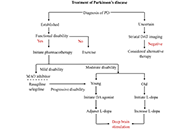 An overview of the role of monoamine oxidase-B in Parkinson’s disease: implications for neurodegeneration and therapyOpen AccessReviewParkinson’s disease (PD) is a neurodegenerative disorder characterized by both non-motor and motor symptoms, due to the loss of dopamine-producing neurons in the brain. Monoamine oxidase-B (MAO-B) [...] Read more.Praveen Kumar Chandra Sekar ... Ramakrishnan VeerabathiranPublished: July 14, 2024 Explor Neuroprot Ther. 2024;4:308–318
An overview of the role of monoamine oxidase-B in Parkinson’s disease: implications for neurodegeneration and therapyOpen AccessReviewParkinson’s disease (PD) is a neurodegenerative disorder characterized by both non-motor and motor symptoms, due to the loss of dopamine-producing neurons in the brain. Monoamine oxidase-B (MAO-B) [...] Read more.Praveen Kumar Chandra Sekar ... Ramakrishnan VeerabathiranPublished: July 14, 2024 Explor Neuroprot Ther. 2024;4:308–318
DOI: https://doi.org/10.37349/ent.2024.00085
This article belongs to the special issue Role of the Monoaminergic Systems in the Pathogenesis and the Pathophysiology of Parkinson's Disease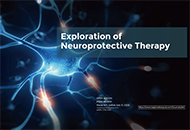 Vitactions: vitamins for the brainOpen AccessPerspectiveA novel concept has been recently put forward in the mind/body interface (https://doi.org/10.37349/ent.2024.00074). The new concept has led to a new word: vitaction. Vitactions [...] Read more.Rafael FrancoPublished: July 01, 2024 Explor Neuroprot Ther. 2024;4:300–307
Vitactions: vitamins for the brainOpen AccessPerspectiveA novel concept has been recently put forward in the mind/body interface (https://doi.org/10.37349/ent.2024.00074). The new concept has led to a new word: vitaction. Vitactions [...] Read more.Rafael FrancoPublished: July 01, 2024 Explor Neuroprot Ther. 2024;4:300–307
DOI: https://doi.org/10.37349/ent.2024.00084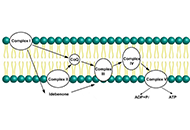 The potential positive effects of coenzyme Q10 on the regeneration of peripheral nerve injuryOpen AccessReviewPeripheral nerve injuries (PNIs) constitute a significant concern as they predominantly affect young and productive age groups of the population, causing social and economic pressure on patients. PN [...] Read more.Ahmed Mead ... Süleyman KaplanPublished: June 21, 2024 Explor Neuroprot Ther. 2024;4:288–299
The potential positive effects of coenzyme Q10 on the regeneration of peripheral nerve injuryOpen AccessReviewPeripheral nerve injuries (PNIs) constitute a significant concern as they predominantly affect young and productive age groups of the population, causing social and economic pressure on patients. PN [...] Read more.Ahmed Mead ... Süleyman KaplanPublished: June 21, 2024 Explor Neuroprot Ther. 2024;4:288–299
DOI: https://doi.org/10.37349/ent.2024.00083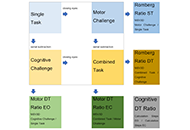 Cognitive-motor interference in multiple sclerosis and healthy controls: results from single, dual, and triple task posturographyOpen AccessOriginal ArticleAim: This article is based on our previous research, which was presented as a poster at the ECTRIMS Congress 2018 and published as a conference abstract (https://www.professionalabstracts.com/ect [...] Read more.Patrik Althoff ... Tanja Schmitz-HübschPublished: June 12, 2024 Explor Neuroprot Ther. 2024;4:273–287
Cognitive-motor interference in multiple sclerosis and healthy controls: results from single, dual, and triple task posturographyOpen AccessOriginal ArticleAim: This article is based on our previous research, which was presented as a poster at the ECTRIMS Congress 2018 and published as a conference abstract (https://www.professionalabstracts.com/ect [...] Read more.Patrik Althoff ... Tanja Schmitz-HübschPublished: June 12, 2024 Explor Neuroprot Ther. 2024;4:273–287
DOI: https://doi.org/10.37349/ent.2024.00082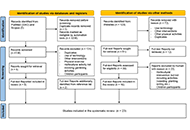 Effect of gardening physical activity on neuroplasticity and cognitive functionOpen AccessSystematic ReviewBackground: The beneficial effects of gardening as a form of physical activity have garnered growing interest in recent years. This research aimed to evaluate the effect of gardening as a physica [...] Read more.Antonio G. LentoorPublished: June 05, 2024 Explor Neuroprot Ther. 2024;4:251–272
Effect of gardening physical activity on neuroplasticity and cognitive functionOpen AccessSystematic ReviewBackground: The beneficial effects of gardening as a form of physical activity have garnered growing interest in recent years. This research aimed to evaluate the effect of gardening as a physica [...] Read more.Antonio G. LentoorPublished: June 05, 2024 Explor Neuroprot Ther. 2024;4:251–272
DOI: https://doi.org/10.37349/ent.2024.00081
This article belongs to the special issue Empower Yourself - Physical Activity as Prevention and Rehabilitation of Neurological and Psychiatric Diseases -
